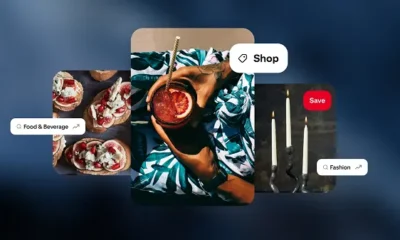DEAR READERS: Companies of all kinds are finding it imperative to build a digital strategy to compete in a world where almost everyone is shopping and doing business online. How can small companies, including startups and those with just a few employees, get the kind of following on their websites and social media platforms that they’ll need to succeed?
There are several steps to take to build your business online.
It is a problem many companies are trying to get their arms around, according to everyone I reached out to. Here are a few tips to get started on the road to social media success:
Develop clearly defined goals. “Determine your objectives, whether they are enhancing brand awareness, generating leads or driving sales growth, as they will serve as guiding principles for developing your strategy,” suggests Dmitriy Shelepin CEO and head of SEO at Miromind.
Identify your ideal followers. That means going beyond demographics like gender and age, according to brand consultant Faith James, CEO of The Personal Branding Consultancy. “It’s important to go deeper into their psychographics — how they think, what motivates them, what their core desires are,” James says. “By focusing on the psychographics, you focus on the emotional connectors that build a stronger connection which goes beyond just the transactional ‘buy my stuff.’ ”
People are also reading…
Choose and prioritize platforms. Shelepin says it is crucial to choose platforms “that resonate with your desired audience and align with your business objectives,” and suggests focusing on one or two of those platforms “to deliver quality over quantity.”
Provide value. James says value can come in various forms, but stresses that it boils down to “helping your audience get a small win in the areas that are meaningful to them.
“If a hair salon is looking to grow their following, they might offer tips on their website and social media platforms such as ‘How to Have Your Hair Color Last Longer,’ ‘3 Tips on How to Beat the Humidity Frizz,’ or ‘How to Avoid Chlorine Damage While Swimming at the Pool,’ ” James says.
Value also can come by educating and informing your audience with things like educational blog posts that establish industry expertise, Shelepin adds.
Invite engagement. This is an essential step, James stresses. “In all instances, the business would invite the audience to share their own hair drama stories, share their own tricks they are using to make their hair color last longer, and invite the audience to submit their own questions about hair care,” James explains.
Build relationships. “Use social media to connect with customers, respond promptly, and share relevant content,” Shelepin says.
Don’t forget about email. It is a great way to maintain customer relationships and to deliver exclusive content and special offers like discounts, Shelepin explains.
Shelepin acknowledges that businesses won’t realize success in the digital realm overnight, but stresses that success is possible to achieve.
“It’s important to maintain consistency, in creating content and engaging on media platforms, as building an online presence takes time,” Shelepin concludes. “By adhering to these strategies, small businesses can cultivate a strong digital presence, enabling them to thrive in today’s competitive landscape.”
How to support small businesses this holiday season
Buy gift cards
One of the easiest ways to support a local small business is buying a present that practically everyone welcomes: gift cards.
Over half of people want to receive gift cards this holiday season, according to NRF’s survey. Most small retail businesses sell gift cards for their shops, and shoppers can often order these online. While gift cards let recipients choose their exact present, they still can show that thought was put into personalizing the present—for example, a gift card to a local bookstore is perfect for an avid reader and one to a local nursery is ideal for those with green thumbs.
Gift cards can also provide an avenue to support local businesses that don’t offer physical items suitable for gifting, such as restaurants. They also allow for gifting experiences, such as tickets to a museum or an independent theater.
Shop in-store
Shopping small can seem daunting when larger corporations often offer lower prices. Indeed, 30% of business owners are raising prices amid continuing inflation, according to National Federation of Independent Business’ October 2023 report.
Shopping in-store and keeping a pulse on discount days at small shops can help with budgeting. Three in 5 Quickbooks survey respondents reported finding the best deals in-store when shopping small. A near-equal share said that holiday shopping at small shops is less stressful than going to large retail chains, with fewer crowds, shorter lines, and a smaller inventory to combat decision fatigue and over-buying. While individual items may cost more, shoppers may spend less overall by avoiding impulse buys and making more intentional purchases. They also can save time scrolling through user reviews (many of which may be fake) and can talk directly to shop owners who may have recommendations for quality-tested or customer-favorite products.
Plus, with a much higher rate of local reinvestment at independent businesses, shoppers can have more certainty that what they do spend will better support their community.
Attend a holiday market or bazaar
Ultrasmall companies and artisans often show up in a big way at local holiday markets, bazaars, and craft fairs. A quick search of “holiday markets near me” will usually produce expansive lists of local craft fairs throughout November and December.
Holiday markets offer a wide variety of goods and create a one-stop shop to support several small businesses at once. Even better, the host is often other local establishments, such as bars and breweries, cultural and visitor centers, or outdoors on streets or parks. Shoppers may also have the chance to grab a peppermint mocha or hot cider from vendors or nearby businesses to help get in the holiday spirit.
Post on social media
People can further support small businesses by sharing their work and engaging with them on social media. This strategy can take many forms: sharing a photo of a holiday display, participating in a giveaway, recommending or “unboxing” products in posts, or sharing and liking posts from local stores.
People giving presents from a small business can include a business card with the gift so the recipient knows where it came from—making it easy for them to tag the company on social media. Within communities, word-of-mouth and social media networks are a particularly effective way to build patronage of local businesses.
The U.S. Chamber of Commerce encourages people to use the #ShopSmall hashtag when sharing their experiences—particularly on Small Business Saturday, Nov. 25—to create a larger conversation and awareness about shopping small for the holidays.
Story editing by Jeff Inglis. Copy editing by Kristen Wegrzyn. Photo selection by Ania Antecka.
This story originally appeared on Next Insurance and was produced and distributed in partnership with Stacker Studio.
Kathleen Furore is a Chicago-based writer and editor. You can email her your career questions at [email protected].


















